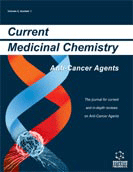Abstract
Fluorescence microscopy of trypanosomes from drug treated mice shows that biologically active heterocyclic diamidines that target the DNA minor groove bind rapidly and specifically to parasite kinetoplast DNA (k-DNA). The observation that the kinetoplast is destroyed, generally within 24 hours, after drug treatment is very important for understanding the biological mechanism, and suggests that the diamidines may be inhibiting some critical opening/closing step of circular k-DNA. Given the uncertainties in the biological mechanism, we have taken an empirical approach to generating a variety of synthetic compounds and DNA minor groove interactions for development of improved and new biological activities. Furamidine, DB75, is a diphenyl-diamidine that has the curvature to match the DNA minor groove as expected in the classical groove interaction model. Surprisingly, a linear diamidine with a nitrogen rich linker has significantly stronger binding than furamidine due to favorable linker and water-mediated DNA interactions. The water interaction is very dependant on compound structure since other linear compounds do not have similar interactions. Change of one phenyl of furamidine to a benzimidazole does not significantly enhance DNA binding but additional conversion of the furan to a thiophene (DB818) yields a compound with ten times stronger binding. Structural analysis shows that DB818 has a very favorable curvature for optimizing minor groove interactions. It is clear that there are many ways for compounds to bind to k-DNA and exert specific effects on kinetoplast replication and/or transcription that are required to obtain an active compound.
Keywords: antiparasitic drugs, dna minor groove, kinetoplast, drug uptake and distribution, drug/prodrug design and synthesis, dna-drug complexes, antiparasitic mechanism of action
 6
6

















